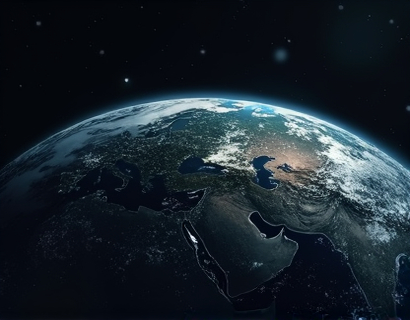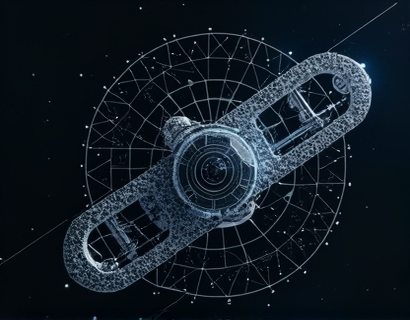Unlocking the Cosmic Convergence: Exploring the Hidden Interplay of Science and Mathematics
The universe, in its vast and intricate tapestry, holds secrets that have captivated human minds for millennia. At the heart of unraveling these mysteries lies the profound interplay between science and mathematics, two disciplines that, when combined, reveal the hidden patterns and fundamental laws governing our reality. This exploration delves into the cosmos, where complex theories and real-world phenomena converge, offering a glimpse into the elegant and often surprising connections that underpin the fabric of existence.
The journey begins with the recognition that mathematics is not merely a human construct but a language that describes the universe. From the simplest arithmetic to the most advanced calculus, mathematical principles permeate every aspect of scientific inquiry. This intrinsic link between math and the physical world is evident in the way scientists formulate hypotheses, design experiments, and interpret data. The universe, in essence, is a grand mathematical structure, and understanding its workings requires a deep dive into the language of mathematics.
One of the most striking examples of this interplay is the theory of relativity, proposed by Albert Einstein. This groundbreaking theory, which revolutionized our understanding of gravity, space, and time, is deeply rooted in mathematical concepts. The famous equation E=mc^2, a cornerstone of the theory, elegantly expresses the equivalence of energy and mass, a relationship that has profound implications in both theoretical physics and practical applications such as nuclear energy.
Another area where science and mathematics converge is in the study of quantum mechanics. This branch of physics deals with the behavior of particles at the smallest scales, where classical notions of reality break down. Quantum mechanics relies heavily on mathematical frameworks, such as wave functions and Hilbert spaces, to describe the probabilistic nature of particles. The Schrödinger equation, a central equation in quantum mechanics, is a prime example of how mathematical models help us understand and predict the behavior of quantum systems.
The cosmos itself is a vast laboratory where the interplay of science and mathematics is on full display. The structure of galaxies, the expansion of the universe, and the behavior of celestial bodies all adhere to mathematical laws. For instance, the Hubble Law, which describes the relationship between the distance of galaxies and their recession velocities, is a direct application of linear algebra and differential equations. This law not only confirms the expansion of the universe but also provides insights into its age and ultimate fate.
Astrophysics, a field that combines astronomy and physics, further exemplifies the synergy between science and mathematics. The life cycles of stars, the formation of black holes, and the detection of gravitational waves all involve complex mathematical models. The detection of gravitational waves, predicted by Einstein's general relativity, was a triumph of both experimental physics and mathematical theory. The analysis of these ripples in spacetime required sophisticated algorithms and computational methods, showcasing the power of mathematical tools in modern science.
Mathematics also plays a crucial role in the field of cosmology, the study of the large-scale structure and evolution of the universe. Cosmological models, such as the Lambda-CDM model, use mathematical equations to describe the composition and dynamics of the universe. These models incorporate concepts from general relativity, quantum field theory, and statistical mechanics to explain phenomena ranging from the cosmic microwave background radiation to the distribution of dark matter.
The beauty of this interplay is not only in its theoretical elegance but also in its practical applications. For example, GPS technology relies on precise calculations based on both general relativity and special relativity to provide accurate positioning data. Without the mathematical corrections for time dilation and gravitational effects, GPS systems would quickly become inaccurate, highlighting the real-world importance of these abstract concepts.
Moreover, the study of fractals and chaos theory demonstrates how mathematical concepts can describe complex and seemingly random phenomena in nature. Fractals, with their self-similar patterns, appear in everything from the branching of trees to the structure of coastlines. Chaos theory, which explores the behavior of dynamical systems that are highly sensitive to initial conditions, finds applications in weather forecasting, fluid dynamics, and even financial markets.
The intersection of science and mathematics is not limited to theoretical and applied domains; it also extends to the tools and technologies we use daily. Computer graphics, for instance, rely on mathematical algorithms to render realistic images and simulations. The rendering of 3D models, the simulation of light and shadows, and the creation of special effects all depend on advanced mathematical techniques, including linear algebra, calculus, and numerical methods.
In the realm of data science and artificial intelligence, mathematics provides the foundation for algorithms that analyze and interpret vast amounts of data. Machine learning models, which are at the heart of many modern technologies, use mathematical concepts such as optimization, probability, and linear algebra to make predictions and decisions. The ability to extract meaningful insights from data is increasingly crucial in fields ranging from healthcare to finance, underscoring the importance of mathematical literacy in the digital age.
The exploration of the cosmic convergence between science and mathematics is not just an academic pursuit; it is a journey that deepens our understanding of the universe and our place within it. By unraveling the intricate connections between these disciplines, we gain not only knowledge but also a sense of wonder and curiosity. This exploration invites us to look beyond the surface of things, to question, and to seek answers to the most profound questions about existence.
As we continue to push the boundaries of what we know, the interplay between science and mathematics remains a powerful tool for discovery. Whether we are gazing at the stars or delving into the subatomic world, the language of mathematics provides the keys to unlock the secrets of the cosmos. This ongoing dialogue between science and mathematics ensures that the universe will continue to surprise and inspire us, driving us to new heights of understanding and innovation.










































